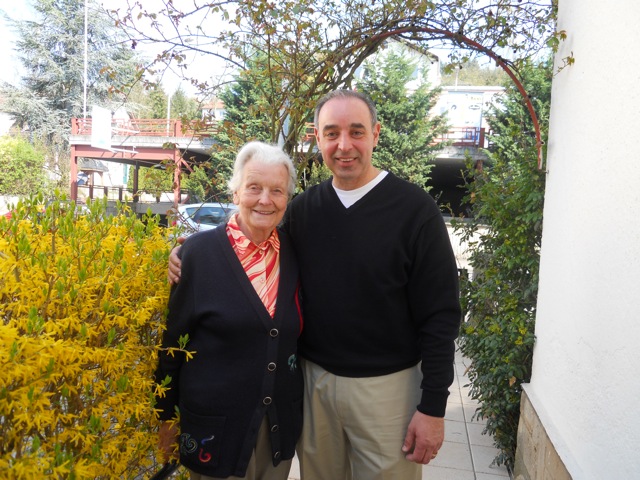The history of Cheneau bracing dates back to the work of Dr. E.G. Abbott of Portland, Maine in the early twentieth century (1907). Dr. Abbott used plaster jackets in an attempt to affect derotation in scoliosis patients (1). His work influenced Dr. Jacques Chêneau of France, credited with the Chêneau bracing concept.

In his quest to advance and improve scoliosis bracing, Dr. Chêneau traveled to Sobernheim, Germany (now Bad Sobernheim) in the 1970s to visit the scoliosis clinic of Katharina Schroth and Christa Lehnert-Schroth, PT. Dr. Chêneau wanted to learn more about Schroth corrective breathing and Christa Lehnert-Schroth’s Classification System (2).
In 1979, Dr. Chêneau developed the first Cheneau orthosis, using bracing concepts that are wholly compatible with Schroth method of corrective exercises for scoliosis. Some notable features of Chêneau-style braces are openings positioned at the spinal concavities and corrective pressure points according to Schroth’s curve-pattern classifications.
Dr. Chêneau was the first brace developer to recognize that idiopathic scoliosis generally involves thoracic lordosis and should be treated accordingly (2). The Chêneau concept of scoliosis bracing and Schroth method exercises both focus on correction in the three planes of scoliosis: the coronal, transverse, and sagittal planes.
In the 1990s, Dr. Chêneau traveled to the Schroth clinic to demonstrate his bracing concepts to other European practitioners. The Cheneau concept of bracing eventually spread throughout Europe (2). At that time, Cheneau braces were fabricated from a mold of a patient’s torso created by casting.
Cheneau Bracing Evolves and Spreads to the US
With the advent of CAD/CAM technology, the Chêneau concept brace has evolved with different practitioners adopting it with their own interpretation. A well-designed Chêneau brace is designed and fabricated with a built-in correction effect according to a patient’s scoliosis curve pattern and size. A custom-designed brace allows for a more exacting fit that should be both effective and comfortable for the patient and contributes to improved corrections (3).
An asymmetric 3D Cheneau-style brace is suitable for patients with mild, moderate, and severe curves (4) and boasts a track record of results superior to other types of scoliosis braces. An effective scoliosis brace should aim to correct (or over-correct) the spine as much as possible and positively influence vertebral rotation, improve posture, and consistently demonstrate excellent in-brace corrections (4). Factors that have been deemed to influence the final outcome are a high initial correction effect and compliance (5).
References
- The New England Journal of Medicine, Volume 167. Massachusetts Medical Society, 1912. 196. Google Books.
- Weiss HR, Lehnert-Schroth C, and Moramarco M, Moramarco K. Schroth Therapy: Advancements in Conservative Scoliosis Treatment. LAP Lambert Academic Publishing. 2015.
- Weiss HR, Moramarco M. Remodelling of trunk and backshape deformities in patients with scoliosis using standardized asymmetric computer-aided design/computer-aided manufacturing braces. Hard Tissue 2013 Feb 26;2(2):14.
- Ng SY, Borysov M, Moramarco M, Nan XF, Weiss HR. Bracing Scoliosis – State of the Art. Curr Pediatr Rev. 2016;12(1):36-42.
- Landauer F, Wimmer C, Behensky H. Estimating the final outcome of brace treatment for idiopathic thoracic scoliosis at 6-month follow-up. Pediatr Rehabil 2003;6:201–207.


